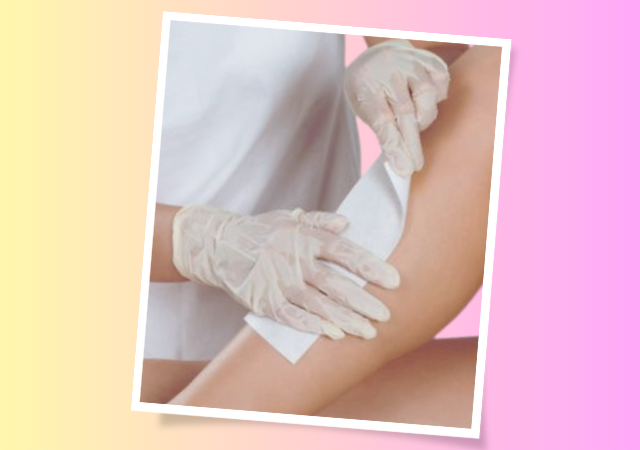The Ultimate Guide to Waxing: Everything You Need to Know
Introduction
Welcome to “The Ultimate Guide to Waxing: Everything You Need to Know,” your comprehensive source for mastering the art of waxing. Whether you’re a seasoned pro or a first-time waxer, this guide is designed to equip you with the knowledge and techniques essential for achieving smooth, hair-free skin. We delve into the intricacies of different wax types, explore the science behind hair growth, and provide step-by-step instructions for both professional salon sessions and confident at-home waxing. From facial waxing to intimate areas, we address specific techniques and considerations.
Discover the pros and cons of various waxing methods, learn how to prepare your skin for the best results, and follow our expert advice on aftercare and troubleshooting. With insights into special considerations, FAQs, and a wealth of tips, this guide ensures you approach waxing with confidence, leaving you empowered to enjoy the silky, long-lasting results you desire.
Understanding Hair Growth

Before diving into the waxing process, it’s crucial to grasp the fundamentals of hair growth. The human hair growth cycle consists of three phases: anagen (growth), catagen (transition), and telogen (rest). Waxing is most effective during the anagen phase when the hair is actively growing and anchored to the follicle. Factors such as genetics, hormones, and age can influence the duration of each phase, impacting the success of a waxing session.
Knowing the ideal hair length for waxing is also essential. Hair should be at least a quarter of an inch long for effective removal. If it’s too short, the wax may struggle to grip the hair, leading to incomplete removal. Conversely, excessively long hair can make the process more painful, as the wax has more to grab onto.
Types of Wax

Waxes come in various formulations, each with its unique characteristics and applications. Understanding the differences between hard wax and soft wax, as well as strip wax and stripless wax, is crucial for achieving optimal results.
- A. Hard Wax vs. Soft Wax: Hard wax is known for its ability to adhere to the hair rather than the skin, making it a preferred choice for sensitive areas like the face and bikini line. Soft wax, on the other hand, is applied thinly and removed with cloth or paper strips, making it suitable for larger areas like the legs.
- B. Strip Wax vs. Stripless Wax: Strip wax involves applying a thin layer of wax and removing it with a cloth or paper strip. Stripless wax, often referred to as hard wax, is applied in a thicker layer and hardens on its own. The wax is then removed without the need for strips. Stripless wax is particularly popular for sensitive areas, as it provides a less abrasive experience.
Preparing for a Waxing Session
Achieving the best waxing results starts before you even step into the salon or begin an at-home session. Selecting the right waxing salon is crucial for a professional and hygienic experience. Look for establishments with experienced technicians, positive reviews, and a commitment to cleanliness.
Pre-waxing skincare is equally important. Exfoliating the skin a day or two before your session helps remove dead skin cells and allows the wax to adhere more effectively. However, avoid over-exfoliating, as this can make the skin more sensitive. Moisturizing regularly in the days leading up to your wax helps keep the skin hydrated and supple, minimizing the risk of irritation.
Additionally, it’s essential to ensure that your hair is the right length for waxing. If it’s too short, consider postponing the session until the hair reaches the recommended length.
Waxing Techniques

Whether you choose professional waxing or opt for an at-home experience, understanding the techniques involved is key to a successful outcome.
A. Professional Waxing vs. At-Home Waxing:
Professional waxing offers the expertise of trained estheticians who can navigate various hair types and body contours. At-home waxing provides convenience and cost savings. Whichever option you choose, following proper techniques is crucial.
B. Step-by-Step Guide for At-Home Waxing:
-
- Begin by thoroughly cleansing the skin to remove any oils or residue.
- Test the wax temperature on a small area to avoid burns.
- Apply the wax in the direction of hair growth.
- Place a strip over the wax, press down firmly, and pull against the direction of hair growth in one swift motion.
- Hold the skin taut with one hand while removing the strip with the other to minimize discomfort.
- Repeat the process, working in small sections until the desired area is hair-free.
C. Tips for Minimizing Pain and Discomfort:
-
- Take a pain reliever 30 minutes before waxing.
- Avoid waxing during menstruation, as sensitivity may be heightened.
- Consider using numbing creams for particularly sensitive areas.
Body Parts and Specifics

Different body parts require unique approaches to waxing. Here’s a breakdown of specific techniques for common areas:
A. Facial Waxing:
-
- Eyebrows: Shape eyebrows with precision, focusing on natural arches.
- Upper Lip: Use small, controlled movements for precise hair removal.
B. Body Waxing:
-
- Arms and Underarms: Waxing the arms and underarms involves specific techniques to minimize pain and ensure thorough hair removal.
- Legs: Achieve silky-smooth legs by following proper waxing techniques for different leg areas.
- Bikini Area and Brazilian Waxing: Navigate the delicate bikini area with care, considering strip or stripless wax depending on your preference.
Aftercare

Post-waxing care is crucial for maintaining smooth and healthy skin. Develop a routine that includes:
A. Post-Waxing Skincare Routine:
-
- Soothing Products: Apply calming lotions or aloe vera gel to reduce redness and inflammation.
- Avoiding Irritants: Steer clear of hot baths, saunas, or harsh chemicals for at least 24 hours post-waxing.
B. Managing Ingrown Hairs:
-
- Exfoliate regularly to prevent ingrown hairs.
- Consider using products with salicylic acid or glycolic acid.
Troubleshooting and Common Mistakes
Despite careful preparation, issues may arise during or after waxing. Here’s how to address common concerns:
A. Dealing with Bruising or Redness:
-
- Apply a cold compress to reduce inflammation.
- Use a soothing lotion with ingredients like chamomile or calendula.
B. How to Fix Uneven Results:
-
- Spot-treat areas with remaining hair using tweezers or a precision razor.
- Avoid re-waxing the same area immediately; wait for the hair to grow.
C. Tips for Avoiding Breakouts:
-
- Opt for a clean, reputable salon with proper hygiene practices.
- Apply a non-comedogenic moisturizer after waxing.
Special Considerations
Certain circumstances may require additional care when waxing:
A. Waxing During Pregnancy:
-
- Consult with a healthcare professional before waxing during pregnancy.
- Consider opting for gentler wax formulations.
B. Waxing for Different Skin Types:
-
- Tailor your waxing routine to your skin type, considering sensitivity and potential reactions.
C. Allergies and Sensitivities:
-
- Perform a patch test before using any new waxing products.
- Choose hypoallergenic waxes if you have known sensitivities.
Frequently Asked Questions
Addressing common queries ensures you approach waxing with confidence:
A. Can I Wax If I Have Sensitive Skin?
-
- Opt for hypoallergenic waxes and perform a patch test.
- Consider consulting with a dermatologist before waxing.
B. How Often Should I Wax?
-
- The frequency of waxing depends on individual hair growth rates.
- On average, waxing every three to six weeks is common.
C. Is Waxing Safe for Everyone?
-
- While generally safe, individuals with certain skin conditions or allergies should exercise caution.
- Consult with a healthcare professional if you have concerns.
Conclusion (The Ultimate Guide to Waxing: Everything You Need to Know)
In conclusion, “The Ultimate Guide to Waxing: Everything You Need to Know” empowers readers with comprehensive insights into the art of waxing. From understanding the intricacies of hair growth to navigating the various wax types, this guide provides step-by-step instructions for both professional salons and confident at-home sessions. Offering tips for preparation, techniques, aftercare, and troubleshooting, the guide addresses specific body parts, skin types, and common concerns. Whether you’re a seasoned pro or a first-time waxer, this ultimate guide ensures you approach the process with confidence, achieving the silky, long-lasting results you desire.

My name is Rohit Vagh and I’m a content writer specializing in fashion and lifestyle. I have three years of experience in this field and have written various articles. My writing style is creative and engaging, and I strive to create content that resonates with my readers. I have a deep passion for fashion and am constantly researching the latest trends and styles to make sure my readers are up to date. I’m excited to continue my career in blogging, and I’m always looking for new opportunities in the fashion and lifestyle space.





